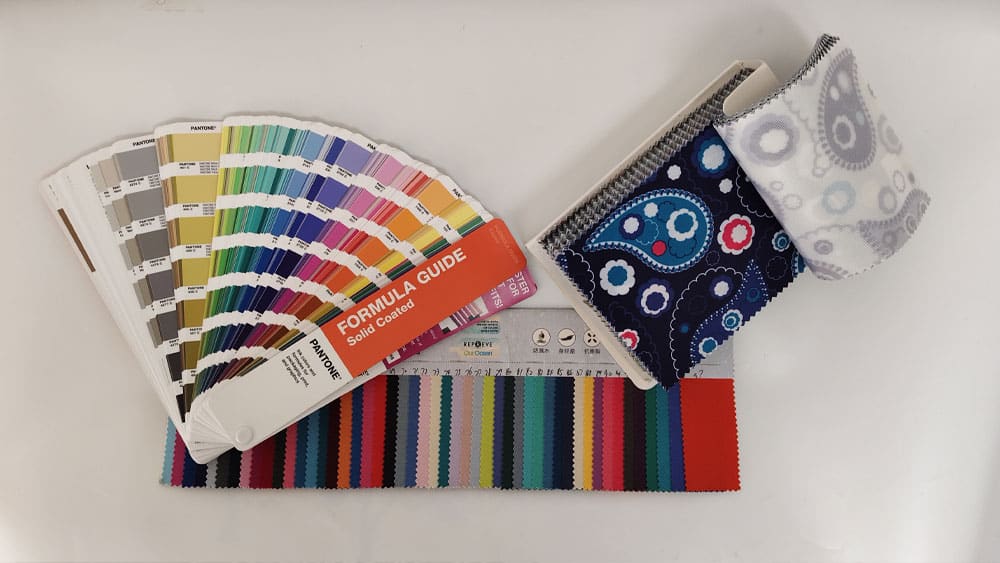What Is Polyester? Everything You Need to Know About This Versatile Fabric(From a Backpack Manufacturer’s Perspective)
As a backpack manufacturing factory serving global brands, we work with polyester fabrics every day—sourcing, testing, cutting, and manufacturing them into school bags, travel packs, and outdoor gear.
For the backpack industry, polyester is the most widely used, cost-effective, and stable fabric choice.
If you’re a sourcing manager, brand buyer, or designer, understanding its structure, performance, and suitability will greatly improve your material selection process.
1. Quick summary
Polyester is a man-made synthetic fiber derived from PET (polyethylene terephthalate), click to learn other fiber Types of Fibers Used in Backpack Fabrics) widely used in backpacks due to its cost-effectiveness, color stability and good balance of durability and processability. For most school bags, travel packs and everyday backpacks, polyester (especially 600D PU/PVC or RPET variants) is the recommended starting point.
2. What Is Polyester? (Professional Explanation)
Polyester is a family of synthetic fibers produced from polymerized ethylene terephthalate (PET). In the bag industry, “polyester” typically refers to woven PET fabrics made in different deniers, weaves and surface finishes. It is derived from petrochemical feedstocks or from recycled PET (RPET).
It is produced through polymerization and melt-spinning, resulting in a fiber with high strength, abrasion resistance, wrinkle resistance, and excellent moisture resistance—ideal for bags and outdoor gear.
3. Common deniers & constructions
Deniers indicate yarn thickness. Typical deniers used in backpacks:
- 210D / 300D: Lightweight daypacks, inner linings, lightweight travel organizers.
- 600D: The industry’s workhorse — used for school bags, commuter backpacks and mid-range travel bags.
- 900D / 1000D: Heavier-duty travel/gear bags where abrasion resistance matters.
- 1680D style constructions: Heavy tool bags and luggage alternatives (usually heavier yarns or double weaves).
We commonly supply plain weaves, oxford weaves and ripstop variants (grid reinforcement) depending on the abrasion and weight targets.
4. Coatings & laminations: PU, PVC and TPU
The base woven polyester provides structure while the coating defines water resistance, surface feel and durability. Here is a practical comparison:
PU (Polyurethane): balanced choice — lighter than PVC, softer hand, better flex and suitable for most backpacks. Easier to sew and finish; good for print/emboss.TPU: premium choice — high waterproofing, excellent low-temperature performance and stronger adhesion. More expensive but ideal for high-end waterproof, seam-taped packs.
Factory recommendation: For most mid-tier and retail backpacks, 600D Polyester + PU coating offers the best mix of price, feel and waterproofing after seam treatments.
5. Advantages of polyester (factory perspective)
- Cost & supply stability: cheaper than many nylons and widely available in large rolls and consistent colors.
- Colorfastness & dye consistency: Batch-to-batch color control is strong which reduces rework and returns.
- Processing advantages: Heat sealing, lamination, printing and sewing are all stable with polyester bases.
- Low water absorption: Quick drying and less prone to mildew.
6. Limitations & when to choose nylon
Polyester performs slightly worse than nylon in raw tensile strength and long-term abrasion at the same denier. For hardcore outdoor backpacks, mountaineering packs or where low weight at high strength is essential, consider:
- 420/500/1000D Nylon (Cordura-type) or technical nylons like 6.6 nylons and high-tenacity variants.
- Dyneema/ UHMWPE laminates for ultra-light, high-strength applications.
7. RPET and sustainability options
Brands increasingly request recycled polyester (RPET) with certification such as GRS. RPET can be offered in most deniers (300D / 600D / 900D) and blended with recycled linings to improve sustainability credentials.
We can provide RPET with transaction certificates (TCs) and support bulk traceability for ESG reporting.
8. How we choose polyester for backpacks — our decision matrix
- Intended use: school, commuter, travel, outdoor, tool bag.
- Required durability: expected abrasion cycles and lifetime.
- Surface appearance & hand: glossy, matte, soft-touch.
- Budget: material cost + coatings + finishings.
- Sustainability requirements: RPET/GRS, OEKO-TEX or custom tests.
Example shortlist:
- Student backpack: 600D polyester + PU
- Commuter laptop bag: 600D RPET + PU + laminate
- Waterproof pouch: 300D polyester + TPU lamination
9. Factory production & quality tips
- Order a roll sample first to test print, hand and lamination adhesion.
- Run a sewing trial to check needle size, tension and backing needs.
- For PU coatings, specify peel strength and flex tests in the tech pack.
- Inspect for color metamerism under different light sources when approving bulk rolls.
- Request COA (certificate of analysis) for RPET claims and check for heavy metals and formaldehyde limits if required.
10. Sample technical spec sheets
Sample A — Student Backpack Material: 600D Polyester (PET) plain weave Coating: PU coating 90gsm Finish: W/R 1,000 mm hydrostatic (after seam tape) Roll width: 150 cm Weight: 305gsm (fabric + coating) Color tolerance: Delta E <= 1.5 Certification: RPET option with GRS (optional) Sample B — Waterproof Pouch Material: 300D Ripstop Polyester Lamination: TPU 70 micron Seam: Heat-welded or seam-taped Waterproof rating: 10,000 mm hydrostatic
11. FAQ
- Q: Is polyester waterproof?
- A: The woven polyester base is not inherently waterproof. Water resistance depends on coatings or laminates (PU, PVC, TPU) and seam treatment. Proper lamination + taped seams can make bags waterproof.
- Q: How does polyester compare to nylon?
- A: Polyester has better colorfastness and cost stability; nylon usually offers higher abrasion resistance and tensile strength at the same denier. Choose nylon for high-performance outdoor packs.
- Q: What is RPET and can you provide certification?
- A: RPET is recycled polyester typically made from PET bottles. We can source GRS-certified RPET and provide transaction certificates (TCs) on request.
- Q: Which coating should I choose for a school bag?
- A: For school bags, 600D polyester with PU coating provides a soft hand, reliable water resistance and good cost-performance balance.
- Q: Can polyester be used for high-end travel luggage?
- A: Yes — heavier deniers (900D / specialty 1680D constructions) with TPU lamination or performance PU can be used for higher-tier luggage. For premium ultralight strength, consider technical nylons or composite laminates.
